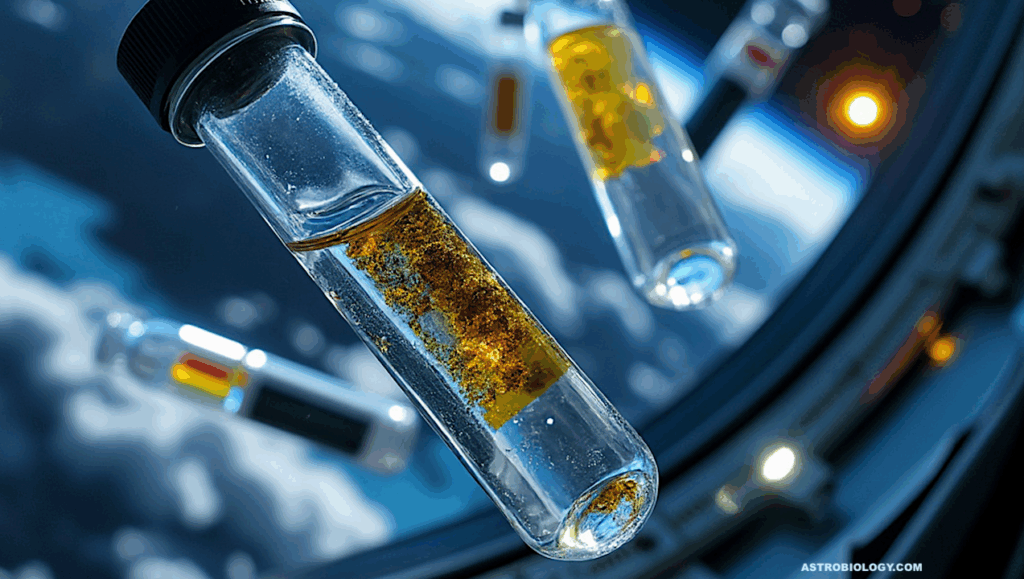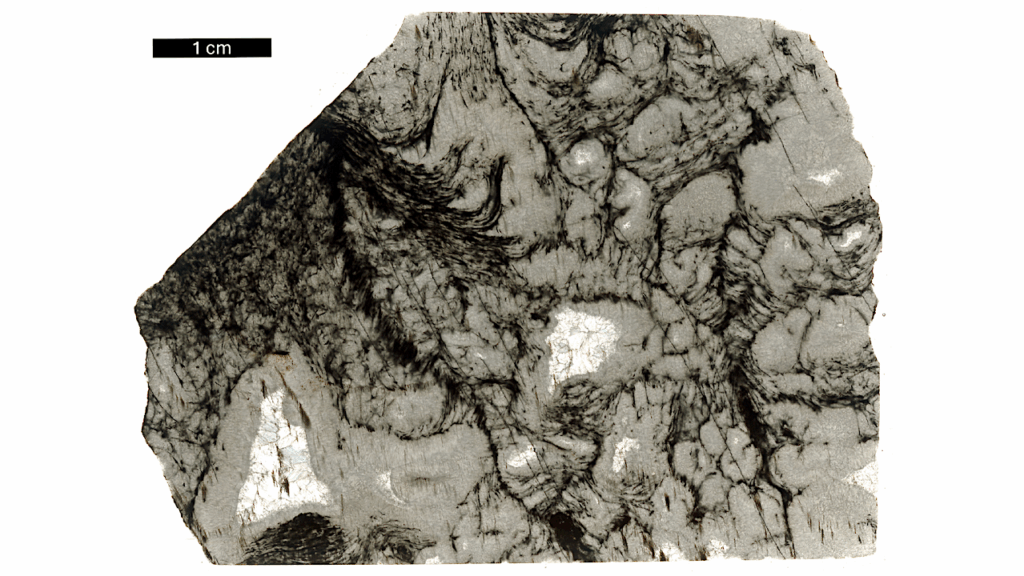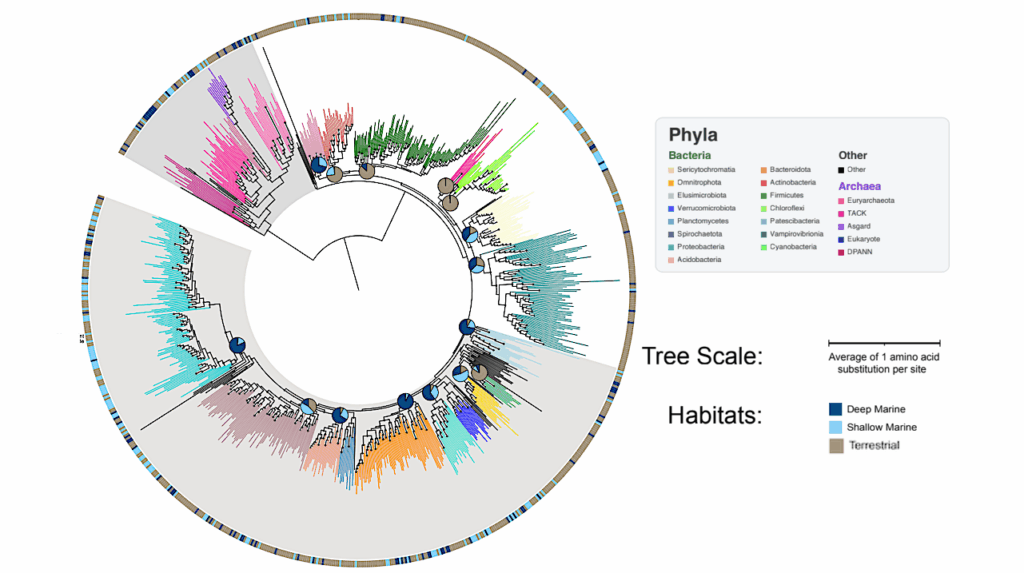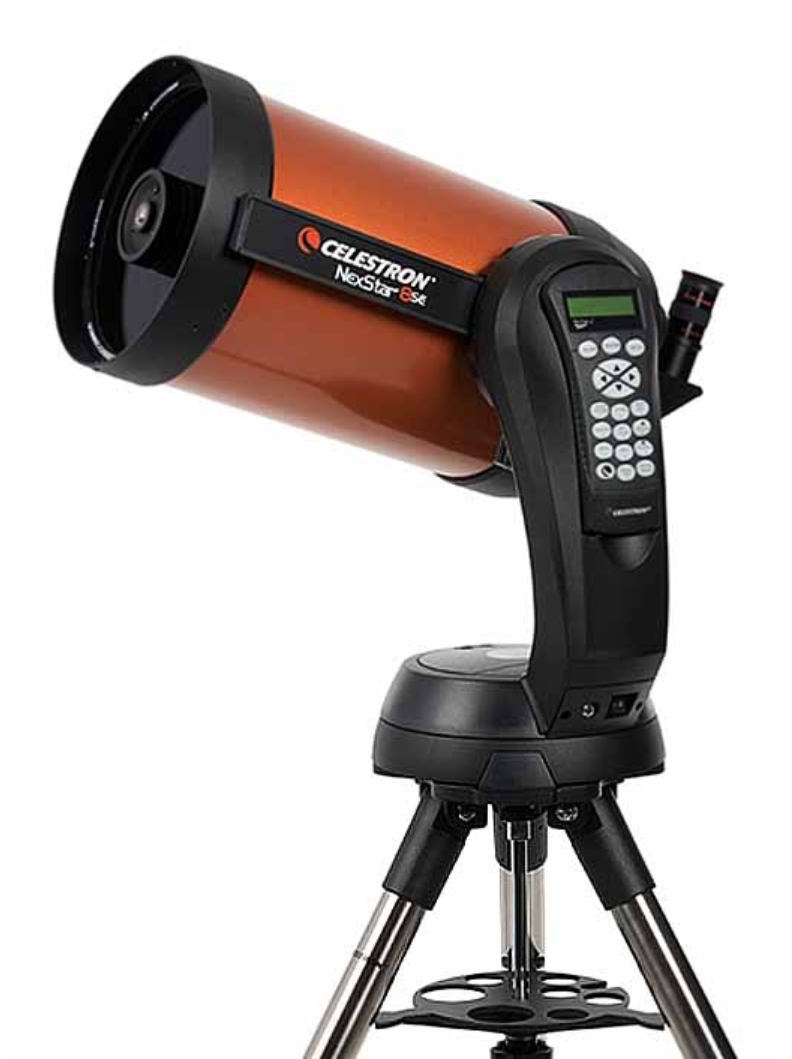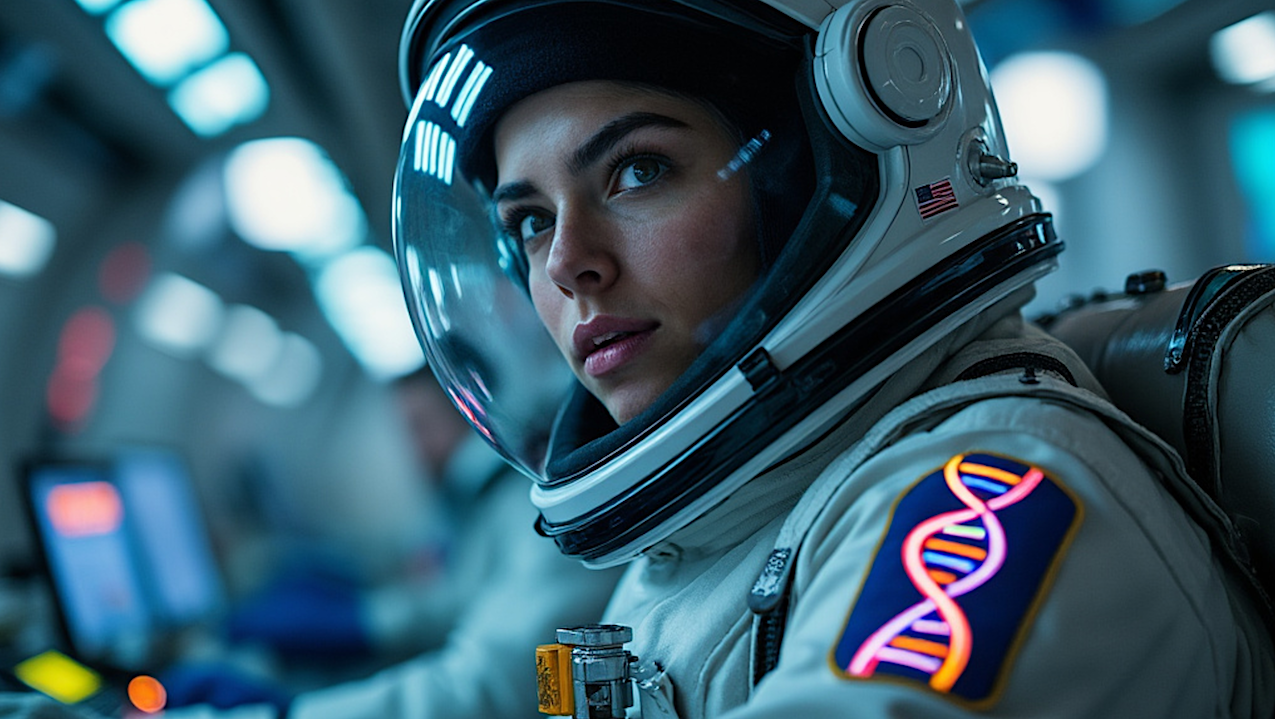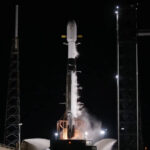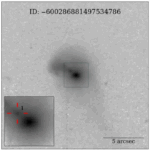Now Reading: Wavelength Requirements For Life Detection Via Reflected Light Spectroscopy Of Rocky Exoplanets
-
01
Wavelength Requirements For Life Detection Via Reflected Light Spectroscopy Of Rocky Exoplanets
Wavelength Requirements For Life Detection Via Reflected Light Spectroscopy Of Rocky Exoplanets
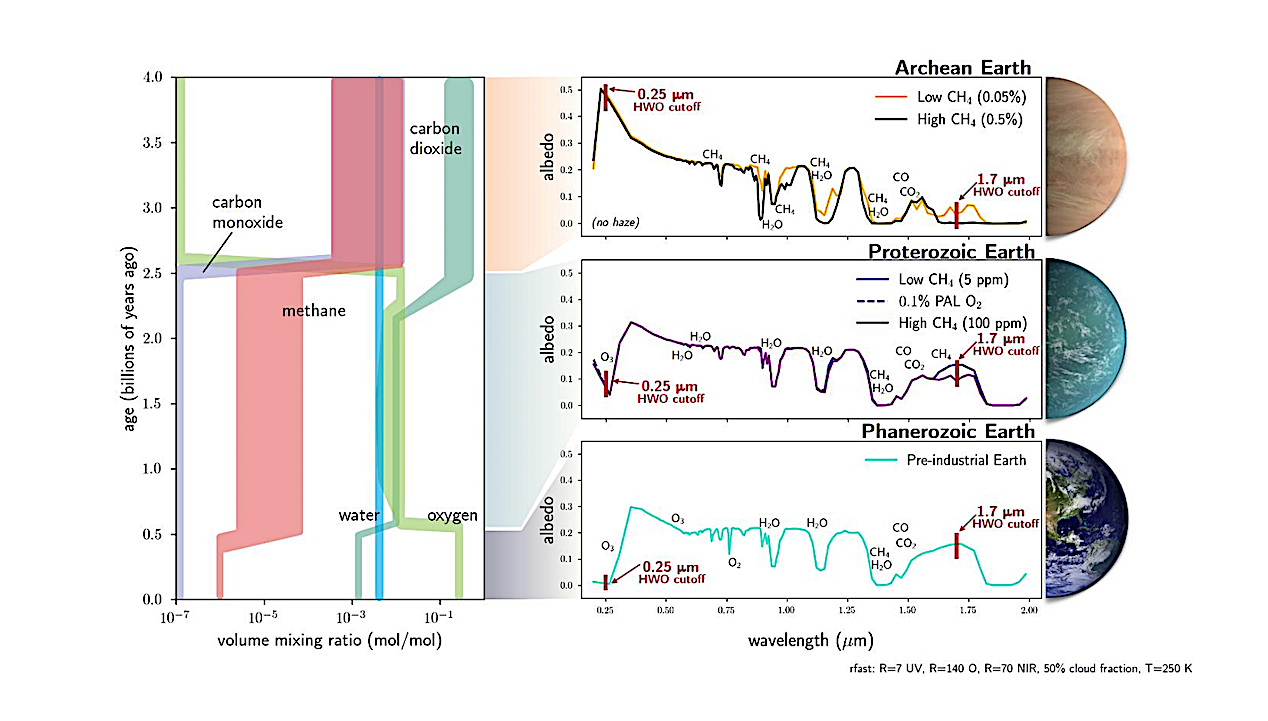

Earth biosignatures through time and their reflected light spectra. The left subplot shows estimates of Earth’s bulk atmospheric composition through time (advancing from top to bottom), and the figures on the right show the corresponding reflected light spectra considered in this study. Key absorption features for biosignature gases (O3, O2, CH4) and suggested long and short wavelength cutoffs are highlighted (as discussed further in Sections 3 and 4). Adapted from National Academies of Sciences (2021) and LUVOIR and HabEx Final Reports (Gaudi et al., 2020; LUVOIR Team, 2019). — astro-ph.EP
Searching for signs of life is a primary goal of the Habitable Worlds Observatory (HWO). However, merely detecting oxygen, methane, or other widely discussed biosignatures is insufficient evidence for a biosphere.
In parallel with biosignature detection, exoplanet life detection additionally requires characterization of the broader physicochemical context to evaluate planetary habitability and the plausibility that life could produce a particular biosignature in a given environment.
Life detection further requires that we can confidently rule out photochemical or geological phenomena that can mimic life (i.e. “false positives”). Evaluating false positive scenarios may require different observatory specifications than biosignature detection surveys.
Here, we explore the coronagraph requirements for assessing habitability and ruling out known false positive (and false negative) scenarios for oxygen and methane, the two most widely discussed biosignatures for Earth-like exoplanets.
We find that broad wavelength coverage ranging from the near UV (0.26 μm) and extending into the near infrared (1.7 μm), is necessary for contextualizing biosignatures with HWO. The short wavelength cutoff is driven by the need to identify Proterozoic-like biospheres via O3, whereas the long wavelength cutoff is driven by the need to contextualize O2 and CH4 biosignatures via constraints on C-bearing atmospheric species.
The ability to obtain spectra with signal-to-noise ratios of 20-40 across this 0.26-1.7 μm range (assuming R=7 UV, R=140 VIS, and R=70 NIR) is also required. Without sufficiently broad wavelength coverage, we risk being unprepared to interpret biosignature detections and may ultimately be ill-equipped to confirm the detection of an Earth-like biosphere, which is a driving motivation of HWO.
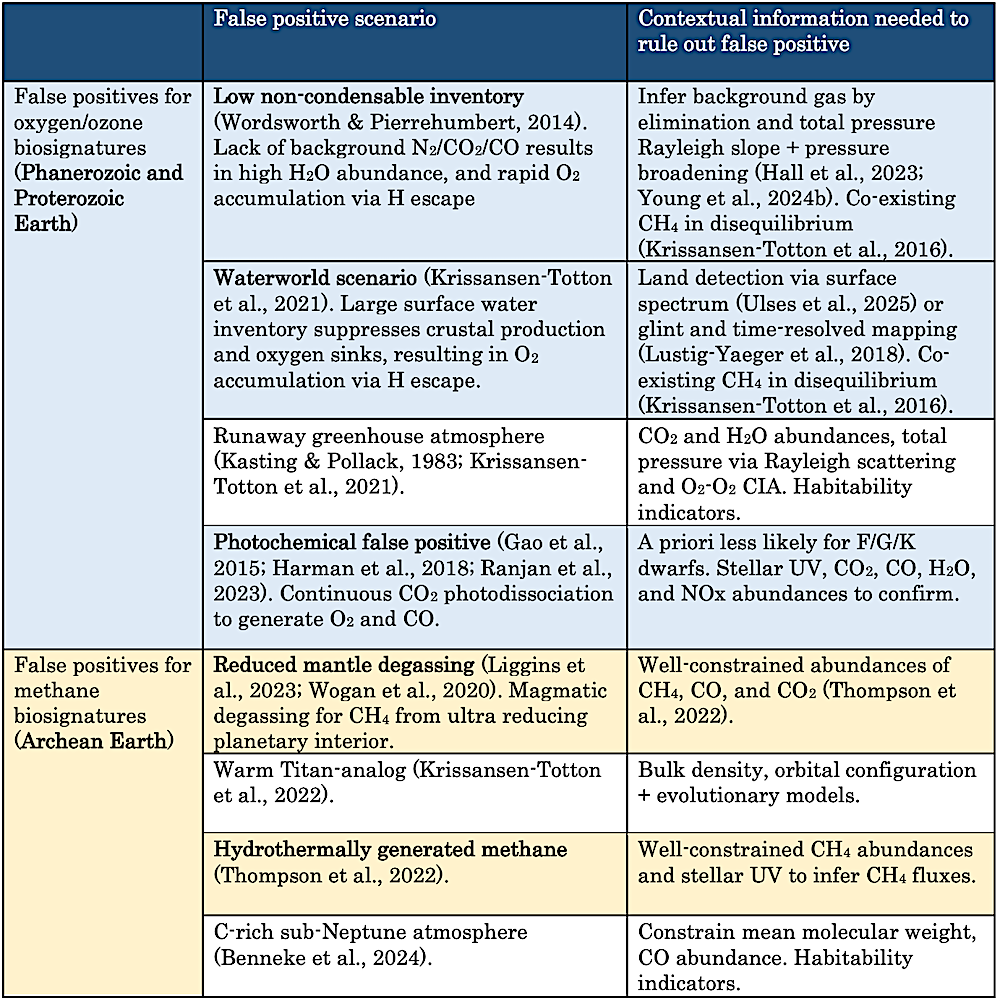
Known biosignature false positive scenarios and their contextual clues for rocky planets
around F/G/K stars. Only bolded scenarios with shaded backgrounds are considered in this study. — astro-ph.EP
Joshua Krissansen-Totton, Anna Grace Ulses, Maxwell Frissell, Samantha Gilbert-Janizek, Amber Young, Jacob Lustig-Yaeger, Tyler Robinson, Stephanie Olson, Eleonora Alei, Giada Arney, Celeste Hagee, Chester Harman, Natalie Hinkel, Emilie Lafleche, Natasha Latouf, Avi Mandell, Mark M. Moussa, Niki Parenteau, Sukrit Ranjan, Blair Russell, Edward W. Schwieterman, Clara Sousa-Silva, Armen Tokadjian, Nicholas Wogan
Comments: In review at Astrobiology. Comments welcome
Subjects: Earth and Planetary Astrophysics (astro-ph.EP)
Cite as: arXiv:2507.14771 [astro-ph.EP] (or arXiv:2507.14771v1 [astro-ph.EP] for this version)
https://doi.org/10.48550/arXiv.2507.14771
Focus to learn more
Submission history
From: Joshua Krissansen-Totton
[v1] Sat, 19 Jul 2025 23:58:29 UTC (2,000 KB)
https://arxiv.org/abs/2507.14771
Astrobiology, Astronomy,
Stay Informed With the Latest & Most Important News
Previous Post
Next Post
-
 012024 in Review: Highlights from NASA in Silicon Valley
012024 in Review: Highlights from NASA in Silicon Valley -
 02Panasonic Leica Summilux DG 15mm f/1.7 ASPH review
02Panasonic Leica Summilux DG 15mm f/1.7 ASPH review -
 03How New NASA, India Earth Satellite NISAR Will See Earth
03How New NASA, India Earth Satellite NISAR Will See Earth -
 04And Thus Begins A New Year For Life On Earth
04And Thus Begins A New Year For Life On Earth -
 05Astronomy Activation Ambassadors: A New Era
05Astronomy Activation Ambassadors: A New Era -
06SpaceX launch surge helps set new global launch record in 2024
-
 07Space Force plans new ‘Futures Command’ amid pressure to speed up modernization
07Space Force plans new ‘Futures Command’ amid pressure to speed up modernization












